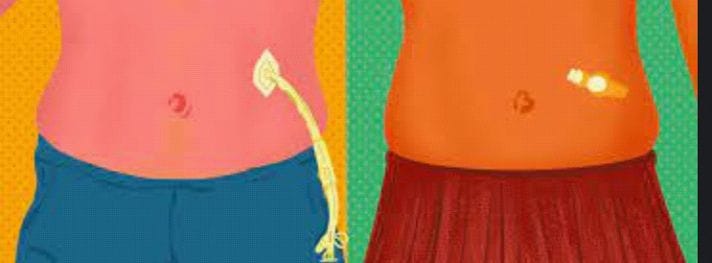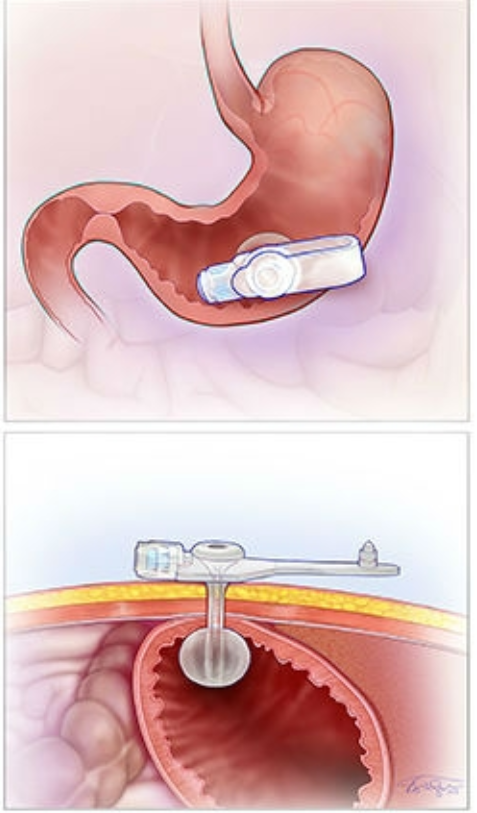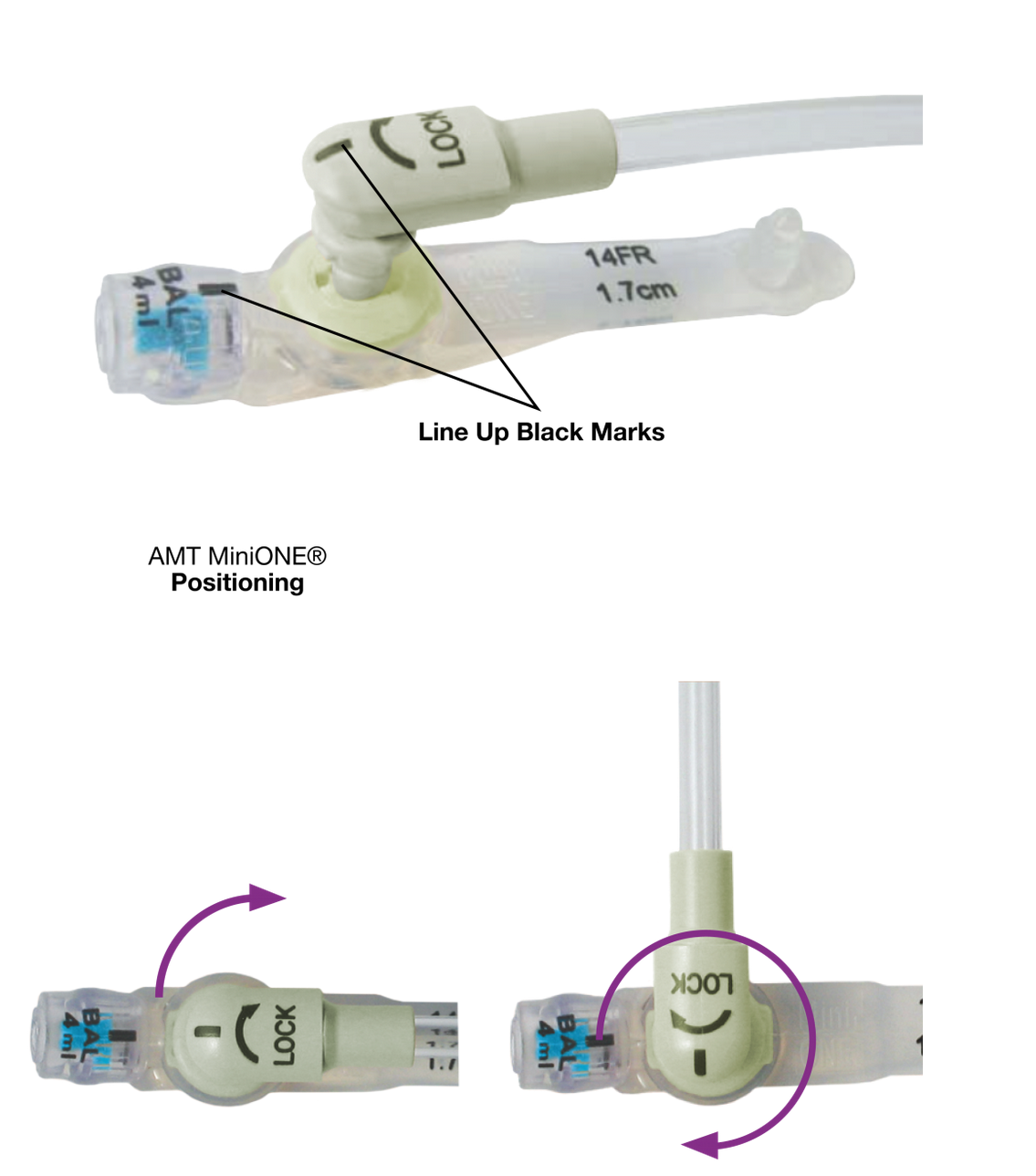Percutaneous gastrostomy tube
Percutaneous gastrostomy tube

The gastrointestinal tract is a long connection that extends from the mouth to the anus. Food travels from the mouth, to the esophagus, to the stomach, to the small intestine, to the large intestine, and finally out through the anus. The small intestine is broken down into three parts: the duodenum, jejunum, and ileum.

Gastrostomy Tube
A gastrostomy tube is a device placed by a Gastroenterologist, an Interventional Radiologist or a Surgeon. It is used to give direct access to the stomach for feeding, hydration, and medications. Most commonly they are used to deliver feedings when the patient is unable to eat food by mouth or is not taking in enough calories to maintain their weight. Your Gastrostomy tube will be changed periodically. It can be removed in your doctors’ office at any point that you no longer need it.
Types of G Tubes
Low Profile Button G Tube - Most of these tubes have a water filled balloon to keep the tube securely in place in the stomach

Long G Tube - Sometimes a longer tube is used which can be held in place with stitches or a water filled balloon.
A Gastrostomy tube can be placed surgically in the operating room, endoscopically by a Gastroenterologist or percutaneously by an Interventional Radiologist. With a percutaneous approach through the skin, a nasogastric tube is placed into your stomach and air is inserted into the stomach. Once the stomach has been distended, ultrasound guidance will be used to visualize your stomach and a tube will be directed into the stomach and be secured in place. Contrast fluid is given through the tube to confirm proper positioning.
- Wash your hands with soap and water before and after care.
- Remove old dressing if a dressing is being used. Check for redness, swelling, any drainage or excess skin growing around the tube. A small amount of clear-tan drainage can be normal.
- Wash skin around the tube with soap and warm water. Clean around the G tube to remove any drainage and/or crusting. Rinse soap off with clear water and dry thoroughly. Keep this site clean and dry.
- A dressing may be used around the G tube site. If a dressing is used it can only be placed above the external bumper. If the gauze dressing is placed under the external bumper/ retention disc it will cause the disc to slide up and the site will leak. If this happens remove the gauze and gently slide the disc down against the skin.
- If your skin is irritated around the tube you can use a barrier cream. If your provider has provided one you can use that or you can purchase something over the counter such as something like “Butt Paste” or “Desitin” that are used for diaper rash.
- After the first 5-7 days you can shower and get the site wet and pat the sire dry gently after. Do not submerge your tube in a bath, pool or hot tub.
- It is OK to be physically active although you should not lift anything greater than 10 lbs for the first 2-4 weeks after placement.
- During activities, keep the tube secured below clothing.
Percutaneous Gastrostomy Tube (G Tube) (Figure 2a and 2b).


Percutaneous Endoscopic Gastrostomy Tube (PEG)(Figure 3a and 3b)
Placed by a Gastroenterologist since it is placed endoscopically.

Figure 3b (note that this type of Gastrostomy tube does not have a balloon or a balloon port. It is instead held in by the mushroom shaped internal bumper).


Low Profile Button Gastrostomy Tube (G Tube) (Figures 4a-e).
- This is a smaller type of Gastrostomy tube used more often in children.
- If you are interested in a Low Profile Gastrostomy tube notify your provider that placed the tube or has been exchanging it to discuss if you are a candidate for this type of tube.
- In order to get one of these Low profile tubes placed you first need to get what is called a stoma measurement for you and then the tube can be ordered and available for you at your next exchange.
- These tubes have a water filled balloon to keep the tube securely in place in the stomach.
- This has an extension set to attach to the button G tube for use.
- Placing this type of tube is not recommended until your weight is stable.

Figure 4a and 4b. Low Profile Button Gastrostomy tube.

Figure 4c. If you need to know the size of the tube you have it is written on the tube as seen below.

Using the extension set (Figure 4d).
- Hold the button with one hand and use the other hand to connect and disconnect the tubing.
- While continuing to hold the button with one hand, please connect the extension tubing: line up the black line on the extension set with the black line on the button. Push down and turn to the right to lock in place.
- While continuing to hold the button with one hand, please disconnect the extension set: Line up the black line on the extension set with the black line on the button. Lift up and remove the tubing. The feeding extension set should be disconnected once the tube can be clamped. It must be washed with soap and water after each use and replaced with a new one once a week.
- Do not force the extension set on or off or you can break the tube and will need to have a tube exchange.
Figure 4d. Low Profile Gastrostomy Tube extension set. 4e. Extension set attached to the low profile tube for use for feedings.

Figure 4e. A picture demonstrating what a stoma size is.

Flushing the G Tube (this is extremely important to prevent clogging of your tube).
- Flush the G tube with at least 30 ml of water every 6 hours (even while the feeds are running).
- Flush with 30 ml water before and after any tube feeding.
- Flush with 30 ml water before, between and after any medications.
Administering Medications
- Try to get your medications in liquid form to try to keep your tube from clogging.
- For pills, check with your doctor or pharmacist before crushing any medications. If you are on a medication that is extended release then it should not be crushed.
- If your pills are in tablet form then crush the tablet well and mix with warm water to give the liquid mixture through your tube.
- Always give one medication at a time and give water in between each medication to prevent clogging.
- For capsules, check with your doctor or pharmacist before opening the capsule. Open and dissolve powder with enough water to make a liquid.
- Medications such as Flomax and Prilosec have little hard round pellets inside the capsule and these will clog your tube. Contact your doctor to change these medications to an alternative.
- Flush your G tube with at least 30 ml water before you give medications. If the tube is sluggish stop and put papaya enzyme into the tube to improve the flow BEFORE putting medications.
- Flush your G tube with at least 30 ml of water between medications and after medications.
Gravity Feedings
- Hang the feeding container 2 feet above and to the side of the feeding tube.
- Remove the cover from the end of the feeding set.
- Prime the feeding set by letting the formula flow until it comes out the end of the tube.
- Sit straight up on a chair.
- Prior to starting your feeding you should flush the tube with 30 ml of water to make sure it’s patent.
- Insert the tip of the feeding set into the G tube.
- Slowly open the clamp on the feeding set.
- Set the flow to your feeding plan. Use the clamp to control the flow until you get your desired rate.
- When the feeding is done, close the clamp on the feeding set and then disconnect it from the G tube.
- Flush the G tube afterwards well with at least 30 ml of water.
Syringe Feedings Drip Method
- Sit straight up on a chair.
- Prior to starting your feeding you should flush the tube with 30 ml of water to make sure it’s patent.
- Remove the plunger from the syringe.
- Place the syringe tip into the G tube and hold the syringe above the stomach.
- Pour the amount of formula into the syringe.
- Allow the formula to flow into the feeding tube via gravity until it is gone.
- Flush the G tube with at least 30 ml of water.
Syringe Feedings Push Method
- Sit straight up on a chair.
- Prior to starting your feeding you should flush the tube with 30 ml of water to make sure it’s patent.
- Draw the amount of formula into the syringe by pulling back on the plunger.
- Place the syringe tip into the G tube and hold the syringe above the stomach.
- Slowly inject the formula into the feeding tube using the plunger.
- Flush the G tube with at least 30 ml of water.
Pump Feedings
- If you are going to get your feeding through a pump the pump should have been arranged with home health and the home health nurse can give you instructions on how to use the pump.
- Flush your G tube with at least 30 ml water before feeds, every 6 hrs while they are running and any time the feeds are held to prevent your tube from clogging.
Giving Medications Through the G Tube
- Try to get your medications in liquid form to try to keep your tube from clogging.
- If your pills are in tablet form crush the tablet well and mix with warm water to give through your tube.
- Do not give more than 1-2 medications at a time to prevent clogging the tube.
- If you are on a medication that is extended release then it should not be crushed. Contact your provider to change this medication.
- Medications such as Flomax and Prilosec have little hard round pellets inside the capsule and these will clog your tube. Contact your doctor to change these medications to an alternative.
- Flush your G tube with at least 30 ml water before you give medications. If the tube is sluggish stop and put papaya enzyme into the tube to improve the flow BEFORE putting medications.
- Flush your G tube with at least 30 ml of water between medications and after medications.
Some people have the Gastrostomy tube placed for venting rather than for nutrition. This can be an alternative to having an NG tube in long term for drainage. Venting a G tube means letting fluid and gas drain from your stomach out through the end of the G tube. You can attach a drainage bag to collect the fluid that drains. This can be used to prevent fullness and bloating and treat nausea. Even if the Tube is only being used for venting it should still be flushed at least twice a day with 30 ml water.
Using a syringe to vent
- Pull the plunger out of the syringe
- Open the end of the G tube (for a low profile balloon G tube, you will need to attach the bolus/venting extension set)
- Attach the syringe without the plunger to the end of the G tube
- Position the tube and syringe above the stomach, allowing air to rise.
- If needed, unclamp the tube.
- After venting, remove the syringe and flush the G tube with water to clear the tube and clamp the tube.
Manually venting a feeding tube
- Open the end of the G tube
- If there is a clamp on the G tube unclamp it.
- You can attach a syringe and pull slowly pull back on the syringe to remove air from the stomach.
- You can also just open the end of the tube over the toilet or a trash can if you begin to feel nauseated.
- If there is a clamp then re clamp the tube.
Attaching a drainage bag for venting of your tube.
- Open the end of the G port and attach it to a drainage bag.
- If you have an “en fit” style tube there is a specially en fit drainage bag that screws on to the end of the G port with a special leuer lock device.
- If you have an older “legacy” style tube you can attach a drainage bag generally used for a foley catheter to drain fluid and gas.
- Empty the drainage bag as needed.
Dislodgement
Try to replace the tube into the opening about 1-2 inches and tape the tube to your abdomen. Then call your care team. DO NOT USE THE TUBE.
Leaking
- A small amount of leaking around the G tube is normal. You can apply a dressing at the Gastrostomy tube site if there is drainage.
- Most times when the G tube site is leaking it is from the external bumper/ retention disc having loosened. This happens from the gauze being placed under the disc and slides the disc up. You may notice your home health nurse place the gauze under the disc since nurses used to be taught to do that, however, it is no longer recommended. Check the disc daily and if it has slid up away from the skin gently slide the disc back down until it is against the skin. This usually will fix the leakage.
- Other times, the tube site can leak if the tube got pulled on forcefully accidentally and the site gets stretched out. With good skin care keeping the skin as dry as possible and with good nutrition the site will heal.
- You may hear someone mention “upsizing” the tube or making it larger if the site is leaking. This will actually make the problem worse and is not recommended.
Skin or excess tissue growing where the tube enters skin
- This is called granulation tissue, which is the body’s natural response to the tube. It is normal for this tissue to bleed a little when bumped or irritated. Call your care team to discuss treatment. This is not an emergency but should be addressed in a timely manner. Your provider can use silver nitrate sticks at the site to treat this.
G tube is sluggish
- If you notice you are having to push a bit harder to flush your tube this is when you should intervene. Do NOT wait until it is completely clogged or you may need to go back to the provider that placed the tube to have it exchanged.
- You can use papaya enzyme from your local vitamin store to help the flow through your tube. Take two tabs and crush them and mix them in warm water. Instill this mixture into the tube and leave it in the tube for 1-2 hours and flush with warm water after.
G tube completely clogged
- Once the tube is completely clogged your options may be limited so it is important to intervene before it completely clogs.
- If it is clogged you can try to slowly push /pull warm water in and out of the tube to try to break up a clog. Do not push hard forward or you may rupture the clogged tube. Never put any object into the tube to unclog it. If you are unable to unclog the tube, call your provider to arrange to have the tube exchanged.
Call your doctor and seek immediate medical care if you notice the following signs and symptoms:
- Signs of infection
- Increase pain, swelling, warmth, redness around drain site
- Pus draining from the insertion site
- Fever
- Sudden change in color and smell of your drainage.
- Tube is coming loose out of your insertion site.
- The site is leaking excessively and you have already checked the disc and slid it down if needed.
- Your tube is clogged and you are unable to unclog it.
- Your tube is broken.
Sources:
- https://www.cincinnatichildrens.org/health/g/g-tube-care
- https://www.chop.edu/treatments/gastrostomy-tubes
- https://www.aboutkidshealth.ca/article?contentid=3827&language=english#/
- https://www.chrichmond.org/services/surgery/gtube/g-tube-care
- https://mydoctor.kaiserpermanente.org/ncal/structured-content/Treatment_Gastrostomy_Tube_Home_Care_-_Pedi_GI.xml?co=%2Fregions%2Fncal
- https://static.abbottnutrition.com/cms-prod/abbottnutrition-2016.com/img/86465%20G-Tube%20feedings_tcm1411-57857.pdf
- https://www.saintlukeskc.org/health-library/discharge-instructions-caring-your-jejunostomy-tube-j-tube#
